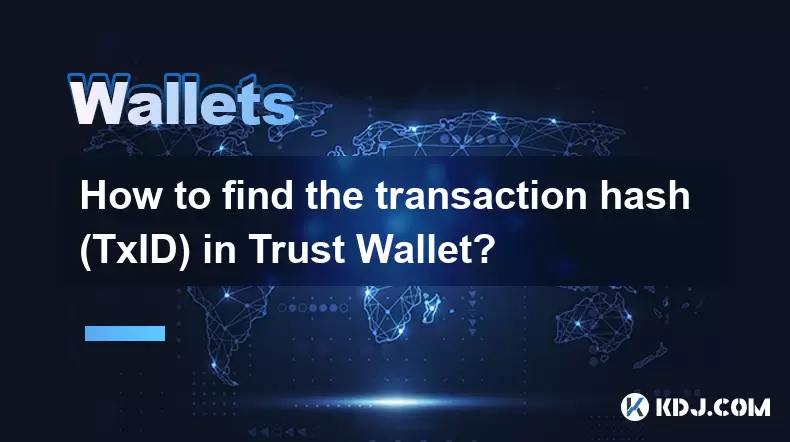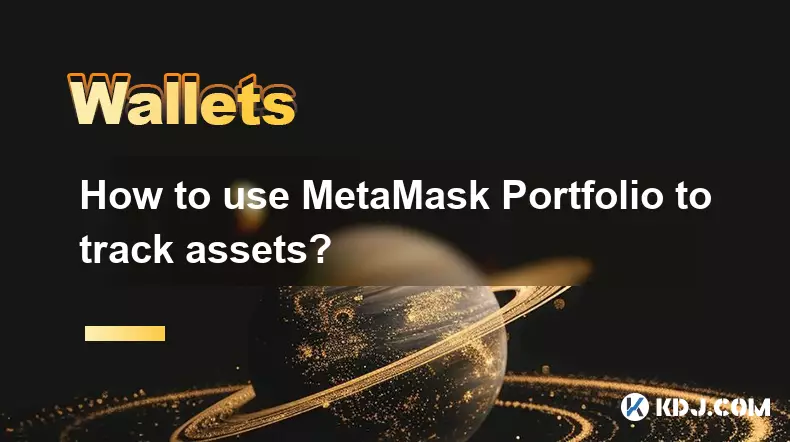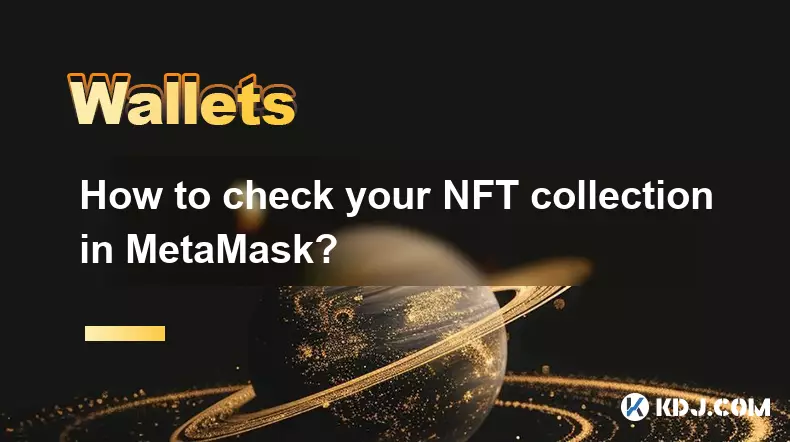-
 bitcoin
bitcoin $101752.865364 USD
-1.09% -
 ethereum
ethereum $3382.985899 USD
-1.38% -
 tether
tether $0.999658 USD
0.04% -
 xrp
xrp $2.272505 USD
-1.51% -
 bnb
bnb $989.089004 USD
0.14% -
 solana
solana $156.962612 USD
-3.08% -
 usd-coin
usd-coin $0.999776 USD
0.01% -
 tron
tron $0.290786 USD
-0.69% -
 dogecoin
dogecoin $0.174594 USD
-2.86% -
 cardano
cardano $0.560085 USD
-3.55% -
 hyperliquid
hyperliquid $40.023704 USD
-5.75% -
 chainlink
chainlink $15.324649 USD
-2.78% -
 bitcoin-cash
bitcoin-cash $493.576540 USD
-3.52% -
 zcash
zcash $571.320038 USD
-12.05% -
 stellar
stellar $0.280066 USD
-4.26%
How to find the transaction hash (TxID) in Trust Wallet?
In Trust Wallet, the transaction hash (TxID) is a unique code used to track and verify blockchain transactions, found in the transaction details screen for each transfer.
Jul 01, 2025 at 09:35 pm

Understanding the Transaction Hash (TxID) in Trust Wallet
The transaction hash, commonly referred to as TxID, is a unique identifier assigned to every blockchain transaction. It allows users to track and verify transactions across various blockchain networks. In Trust Wallet, a popular mobile wallet for managing cryptocurrencies, locating this TxID is essential for confirming transfers, resolving disputes, or auditing your transaction history.
Each TxID is a long alphanumeric string that acts like a receipt for a blockchain transaction. Being able to locate it within Trust Wallet gives you transparency and control over your digital asset movements.
Navigating the Trust Wallet Interface
Before diving into how to find the transaction hash, it's important to understand how Trust Wallet organizes transaction data. Upon opening the app, you'll see a list of supported blockchains, including Ethereum, Binance Smart Chain, Bitcoin, and others. Each blockchain has its own set of transactions associated with your wallet address.
To access transaction details:
- Open the Trust Wallet application on your mobile device
- Select the blockchain network where the transaction occurred (e.g., Ethereum or BSC)
- Tap on the token or coin involved in the transaction
- You’ll be directed to a screen showing all recent transactions for that particular asset
Navigating through these screens helps you isolate the specific transaction you want to investigate.
Locating the Transaction Hash in the Transaction Details
Once you've selected a transaction from the list, you'll enter the transaction detail page. This screen contains valuable information such as the amount sent or received, timestamps, gas fees, and most importantly, the transaction hash (TxID).
Here’s how to view it:
- Tap on any transaction entry from the transaction list
- Scroll down to find the Transaction ID section
- The TxID will appear as a long hexadecimal code starting with “0x” for Ethereum-based transactions
- For Bitcoin or other non-EVM chains, the format may differ slightly but remains a unique identifier
This hash can be copied directly from the app by tapping the copy icon next to the TxID field. It can then be pasted into a blockchain explorer for further verification.
Using the Transaction Hash with Blockchain Explorers
After retrieving the TxID, you might want to verify the transaction using a blockchain explorer. Depending on which network your transaction was made on, you should use the corresponding explorer.
Examples include:
- Ethereum: Etherscan (etherscan.io)
- Binance Smart Chain: BscScan (bscscan.com)
- Bitcoin: Blockchair (blockchair.com) or similar
Steps to verify:
- Open a browser and navigate to the appropriate blockchain explorer
- Paste the TxID into the search bar
- Press Enter to load the transaction details
This step confirms whether the transaction has been successfully processed and how many confirmations it has received.
Sharing or Using the Transaction Hash for Support
There are situations where you may need to provide the TxID to customer support or another party to resolve issues related to fund transfers, failed transactions, or incorrect addresses. Having the TxID ready makes the troubleshooting process faster and more efficient.
To share the TxID:
- Copy the hash from the transaction details screen in Trust Wallet
- Paste it into an email, chat message, or support ticket
- Make sure the recipient knows which network the transaction belongs to (e.g., Ethereum, BSC)
Providing accurate and complete transaction details ensures faster resolution when dealing with third-party services.
Frequently Asked Questions
1. Can I find the transaction hash if the transfer failed?Yes, even failed transactions generate a TxID. You can still find it in the transaction details within Trust Wallet. The failure status will also be visible when you check the transaction on a blockchain explorer.
2. Why does my transaction have multiple hashes?Some transactions, especially those involving smart contracts or multi-token transfers, may generate multiple TxIDs. However, each individual blockchain transaction will have only one unique TxID.
3. Is the transaction hash the same as the wallet address?No, they are different. A wallet address identifies your account on the blockchain, while a transaction hash (TxID) uniquely identifies a specific transaction.
4. How long does it take for a TxID to appear after sending funds?The TxID appears immediately in Trust Wallet once the transaction is broadcast to the network. However, confirmation time varies depending on network congestion and gas fees paid.
Disclaimer:info@kdj.com
The information provided is not trading advice. kdj.com does not assume any responsibility for any investments made based on the information provided in this article. Cryptocurrencies are highly volatile and it is highly recommended that you invest with caution after thorough research!
If you believe that the content used on this website infringes your copyright, please contact us immediately (info@kdj.com) and we will delete it promptly.
- Ripple (XRP) in 2026: Hold or Fold? A Look at XRP's Future and Emerging DeFi Alternatives
- 2025-11-08 18:35:01
- Zcash ZEC Coin Price Explosion: From Privacy Niche to Center Stage
- 2025-11-08 18:55:01
- Berachain Price Prediction: Navigating the Honeycomb Hype in Crypto
- 2025-11-08 18:55:01
- Arthur Hayes, Gold, and Bitcoin: A Modern Monetary Trinity?
- 2025-11-08 19:15:01
- Shiba Inu's Next Move: Navigating a Shifting Market
- 2025-11-08 19:20:01
- Pakistan's Crypto Crossroads: Balancing Opportunity with Asset-Backed Realities
- 2025-11-08 19:20:01
Related knowledge

How to use MetaMask Portfolio to track assets?
Nov 08,2025 at 05:40am
Getting Started with MetaMask Portfolio1. Download and install the MetaMask mobile app from the App Store or Google Play. Open the app and select 'Imp...

How to check your NFT collection in MetaMask?
Nov 06,2025 at 08:20pm
Accessing Your NFTs in MetaMask Wallet1. Open the MetaMask browser extension or mobile app and ensure you are logged into your wallet account. Once in...

Why is the MetaMask swap feature failing?
Nov 06,2025 at 09:20pm
Understanding MetaMask Swap FailuresMetaMask, one of the most widely used cryptocurrency wallets, enables users to swap tokens directly within the int...

How to update the MetaMask extension in Chrome?
Nov 08,2025 at 07:39am
Updating the MetaMask extension in Chrome is a simple process that ensures you have access to the latest security features, performance improvements, ...

How to import an account into MetaMask using a private key?
Nov 07,2025 at 07:40am
Importing an Account into MetaMask with a Private KeyMetaMask is one of the most widely used cryptocurrency wallets, particularly within decentralized...

What to do if my MetaMask wallet was compromised?
Nov 06,2025 at 04:59pm
Immediate Steps to Take After a Compromised MetaMask Wallet1. Disconnect your device from any phishing websites immediately. If you clicked on a suspi...

How to use MetaMask Portfolio to track assets?
Nov 08,2025 at 05:40am
Getting Started with MetaMask Portfolio1. Download and install the MetaMask mobile app from the App Store or Google Play. Open the app and select 'Imp...

How to check your NFT collection in MetaMask?
Nov 06,2025 at 08:20pm
Accessing Your NFTs in MetaMask Wallet1. Open the MetaMask browser extension or mobile app and ensure you are logged into your wallet account. Once in...

Why is the MetaMask swap feature failing?
Nov 06,2025 at 09:20pm
Understanding MetaMask Swap FailuresMetaMask, one of the most widely used cryptocurrency wallets, enables users to swap tokens directly within the int...

How to update the MetaMask extension in Chrome?
Nov 08,2025 at 07:39am
Updating the MetaMask extension in Chrome is a simple process that ensures you have access to the latest security features, performance improvements, ...

How to import an account into MetaMask using a private key?
Nov 07,2025 at 07:40am
Importing an Account into MetaMask with a Private KeyMetaMask is one of the most widely used cryptocurrency wallets, particularly within decentralized...

What to do if my MetaMask wallet was compromised?
Nov 06,2025 at 04:59pm
Immediate Steps to Take After a Compromised MetaMask Wallet1. Disconnect your device from any phishing websites immediately. If you clicked on a suspi...
See all articles





















![The Graph Price Prediction [GRT Crypto Price News Today] The Graph Price Prediction [GRT Crypto Price News Today]](/uploads/2025/11/07/cryptocurrencies-news/videos/690d4df44fe69_image_500_375.webp)




















































